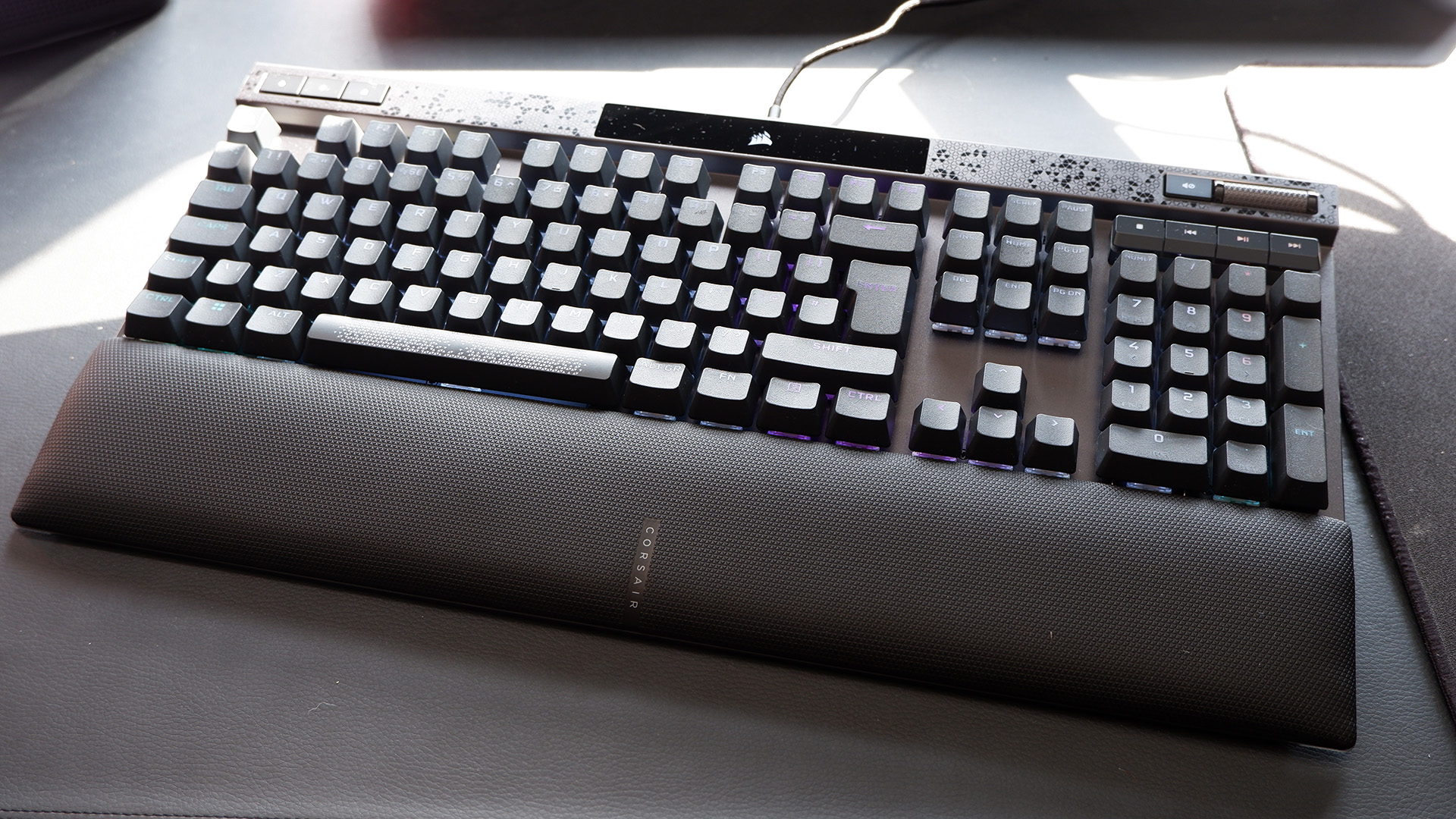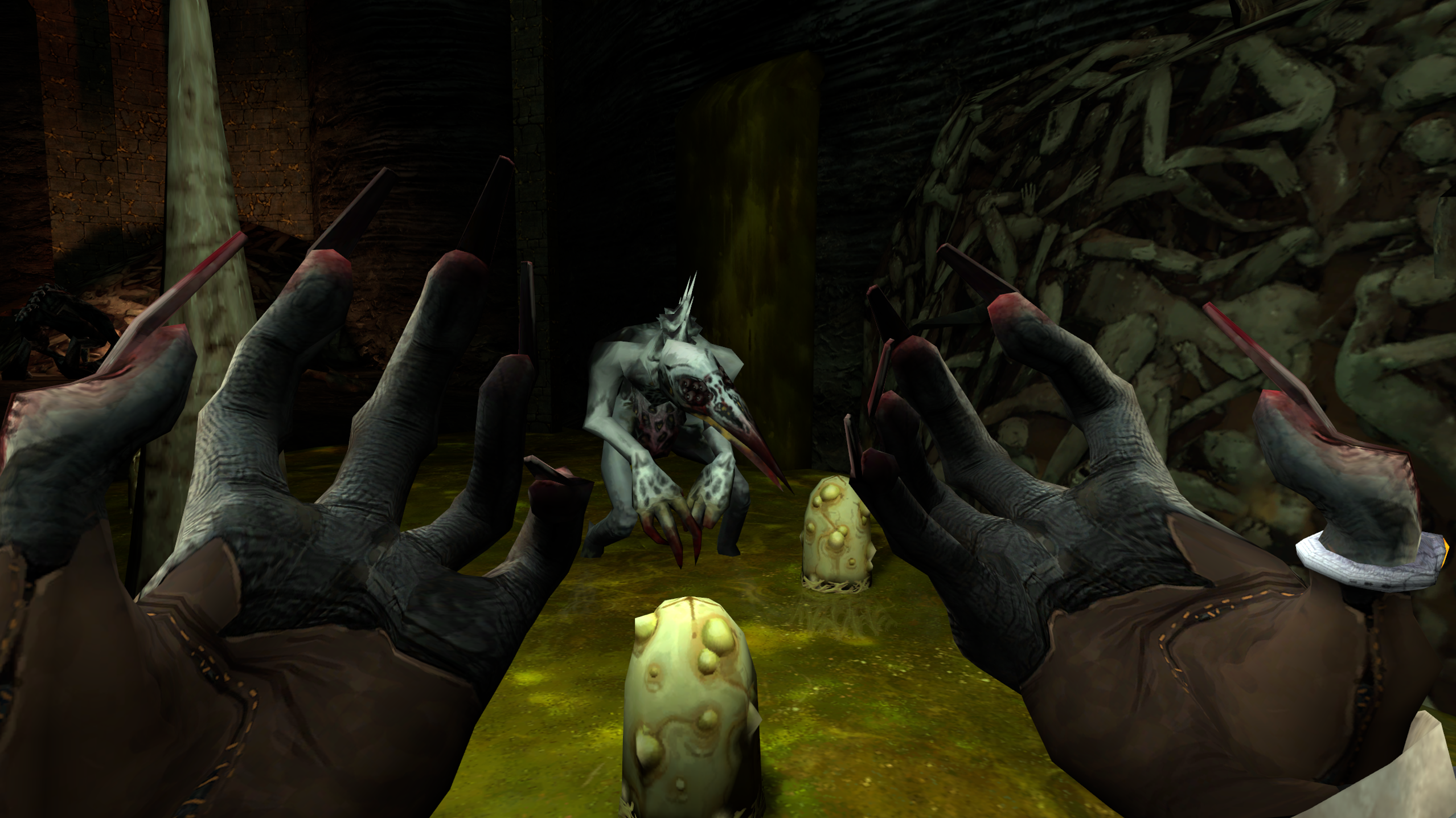
Probably the fastest gaming keyboard I've ever used.
Corsair has finally brought Hall-effect magnetic key switches to its famed K70 keyboard design. Every switch in the K70 Max is fitted with one of Corsair’s new MGX switches, hoping to tap into that magnetic-mechanical magic that has become a bit of a trend lately in the world of enthusiast gaming keyboards.
Magnetic key switches have a few major benefits over standard mechanical switches. Chief among them adjustable actuation points, making for a customisable typing experience catering to both gamers and typists, depending on how you choose to set them up. The Corsair’s MGX switches offer actuation between 0.4mm and 3.6mm. That makes it snappier than MX Speed switches on the one hand, which actuate at 1.2mm, and seriously tough to mistype on on the other. It’s not quite the range of actuation that we’ve seen on the Wooting Two HE, though for most gamer’s needs, it’ll do nicely.
For most gamers, it’s worth trying out the lowest actuation and seeing how that works for you. Only the lightest touch will actuate the switch, and while that’s not great if you’re a clumsy typer, it means your actions are relayed in-game post-haste. You can also choose to only set a few of the keys to one actuation, say WASD and the surrounding keys, and leave the rest.
Paired with the 8000Hz polling rate and adjustable reset points, the K70 Max is probably the most rapid gaming keyboard I’ve ever used.
(Image credit: Future)
Switches: Corsair MGX (linear)
Connectivity: Wired (USB Type-A to Type-C)
Backlighting: per-key RGB
Onboard memory: 8MB
Polling rate: Up to 8,000Hz
Media controls: Yes, volume wheel and shortcut keys
Price: $230/€230/£220
Though I’m glad to see Corsair roll out at least one other feature tied to those magnetic switches: dual-point actuation. These take a little bit of getting used to, but in theory you can make even more use of these switches by assigning two actions to a single key press. The exact actuation points for these dual-action keys can be set in iCUE, but ideally you’ll have one action actuate half-way down the switch, and the other when it bottoms out.
While a bit light on some of the more intricate magnetic features found on the Wooting, including analogue movement, there’s still plenty of customisation to dig your teeth into on the K70 Max.
As for the typing experience on the K70, the board feels decent. Compared to the Asus ROG Strix Scope II 96 Wireless I’ve also been testing recently, however, it’s not only the louder of the two but not as pleasant to type on. The rattle of the keys is pretty noticeable versus the Scope II’s lubed switches and sound dampening measures. The K70 Max does also offer two sound dampening layers, though it’s not as effective. It’s no louder than a clicky switched board, though I would warn anyone looking for a keyboard to stream with or mostly for intense typing tasks to look elsewhere.
(Image credit: Future)
✅ You have a need for speed: A combination of quick-actuating key switches and a polling rate up to 8,000Hz means this board can keep up with your actions like no other I’ve used before. The key actuation helps in that you don’t have to press the keys down much to have them register a button press, and the high polling rate means the keyboard is sending those button presses to your PC more often.
❌ You want a keyboard primarily for typing: This is a mighty gaming keyboard, but not quite as satisfying as some to type on. It feels a bit clunky for rapid typing, whereas other boards that focus more on the mechanical switch side of things are much smoother and quieter.
The K70 Max should make a good companion for competitive gamers. Not just for that speed I mentioned before, but the switch on the rear of the board puts it into Tournament Mode. This locks the lighting to a single colour, removes all custom actions, and flips the keyboard to a basic profile. While you might wonder why you’re spending so much money on a keyboard only to disable most of it with a single switch, I get the appeal of having that option hard-coded into the board. You couldn’t accidentally switch out of Tournament Mode, either, it’s got a physical locking system to keep the switch in place once enabled.
There’s no faulting the Corsair on its looks. The per-key RGB is about as good as you’d expect from a company so well-known for slapping LEDs on everything. It’s really the board’s ability to nail white light that brings out the colours a lot, and despite being fitted with the more robust PBT keycaps the shine through is superb. All the RGB lighting is customisable via the iCUE app, and it’s one of the better applications for putting all those options in one place but still keeping it easy to navigate.
The build quality is impressive, especially on the included wrist rest. But be warned, this is a chunky keyboard. Corsair loves a thick board, and with the added height of the top row, fitted with a volume wheel and some shortcut keys, it’s a real desk hog. I also don’t love how tiny the num lock and caps lock indicators are next to the Corsair logo in the centre of the board. A bit finicky of me, I know, but it feels like they could be a little more visible at a quick glance down. And at this sort of price, it pays to be critical.
(Image credit: Future)
For what is a solid iteration on a classic gaming keyboard, the K70 Max at $230/£220/€230 is damn expensive. That’s a lot next to enthusiast-mimicking boards such as the ROG Strix Scope II 96, and I prefer the general typing experience on that slightly cheaper board by a good margin. If Corsair could nail down that sort of robust typing feel and satisfying clack alongside the especially quick competitive gaming features, the K70 Max would be the board to beat for both gamers and typists.
For now, the K70 Max is a high-end keyboard that will appeal to those chasing the snappiest response above all else.






